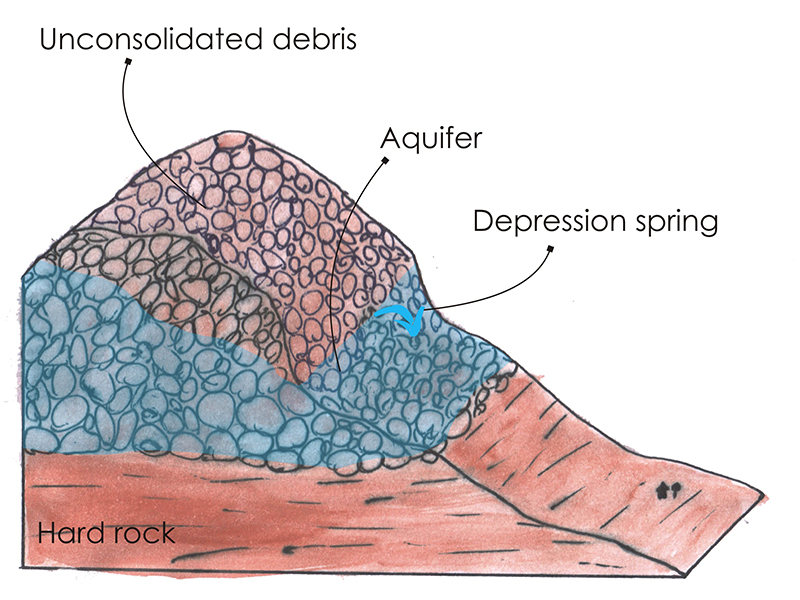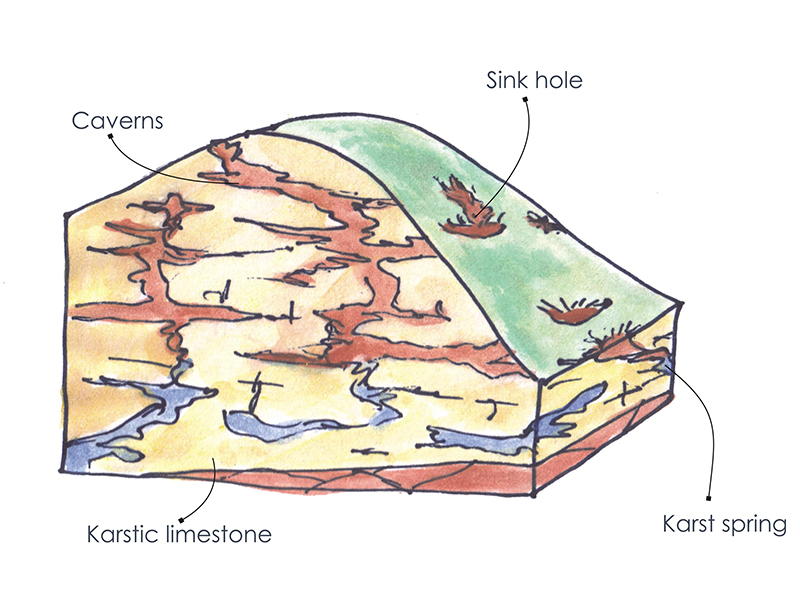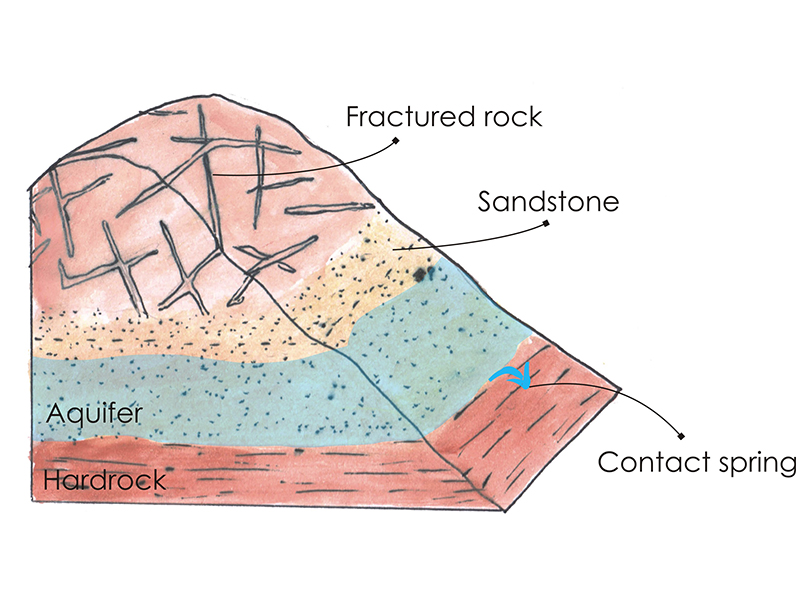Types of Springs
Springs are fed by aquifers, a system of rocks/rock material, which stores and transmits water to such springs. Different rocks show different properties that are characteristic of the process of the formation of the rock. The extent of mountains aquifers, their geometry and hydrological parameters exhibit large variation influencing spring behavior. Recharge to the spring is governed by spring type, aquifer geometry and its properties. Geologically, springs are classified into five types.
Depression Springs
Depression springs are formed in unconfined aquifers when the topography intersects the water table, usually due to the surface stream incision. As the Springs are formed because of earth’s gravitational pull they are named depression or gravity springs. These are usually found along the hillside and cliffs.

Fracture Springs
Fracture springs occur due to existence of permeable fracture zones in low permeability rocks. Movement of groundwater is mainly through fractures that constitute the porosity and permeability of aquifers. Springs are formed where these fractures intersect the ground surface.

Karst Springs
The term ‘Karst’ is derived from a Slavic word that means barren, stony ground. It is also the name of a region in Slovenia near the border with Italy that is well known for its sinkholes and springs. Geologists have adopted karst as the term for all such terrain. Cavities are formed in carbonates rocks (limestones, dolomites, etc.) due to dissolution of rock material by chemical reaction. Water moves through these cavities and openings to form a spring or a system of springs.

Fault Springs
Faulting may also give rise to conditions in which groundwater (at depth) under hydrostatic pressure (such as in confined aquifers) can move up along such fault openings to form a spring.

Contact Springs
Contact springs emerge at contacts where relatively permeable rocks overlie rocks of low permeability. Spring water emerges at such contacts.

Source : Spring Water Atlas
Last Modified : 9/14/2023
